Advertising surrounds us everywhere we go, whether it’s in our homes, cars, or even outdoors. With the advancement of technology, advertising has become even more effective, as it is easier to measure the results. We can collect data on the number of viewers, impressions, clicks, and so on. However, how do we measure outdoor advertising, such as billboards? Out-of-home advertising has survived centuries of advertising methods and is still evolving. In this article, we will explain how to measure OOH advertising and why it is worth investing in it.
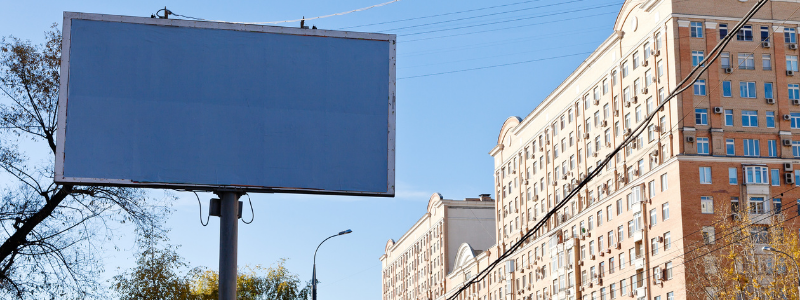
What is Out-of-Home Advertising?
Out-of-home (OOH) advertising refers to any advertising that people come across while they are outside of their homes. It includes advertisements on billboards, in transit stations, on public transport, and at other outdoor locations. According to the Cambridge Dictionary, OOH advertising is a form of advertising that people see or hear while they are out and about. It is worth noting that this form of advertising is a significant contributor to the advertising industry, with approximately 29 billion dollars being spent on out-of-home advertising each year.
Types of Out-of-Home Advertising
The Out of Home Advertising Association of America (OAAA) has identified several types of outdoor advertising. This category is quite broad and encompasses numerous types of advertisements. There are many excellent examples of OOH advertising from around the world. As a result, it is easier to divide OOH advertising into four primary categories:
- Billboard-Type Advertising
- Street Furniture
- Transit
- Place-Based OOH
These advertising methods are widely used by businesses to reach out to their target audience and enhance their brand visibility.
Why Use It?
Almost everyone encounters out-of-home advertising, whether it’s during their commute, while running, or shopping for groceries. According to the OAAA, individuals spend around seventy percent of their day outside of their homes, which makes them highly susceptible to outdoor advertising during a significant portion of their day.
According to a study conducted in 1975 by the Institute of Outdoor Advertising, which was later changed to the OAAA, the name recognition of the current Miss America increased by an astounding 940 percent when it was advertised on a billboard. This demonstrates the significant impact that out-of-home advertising can have on the average consumer. Billboards currently dominate the landscape of outdoor advertising, accounting for approximately 65 percent of all examples.
Another important facet is that out-of-home advertising has the advantage of holding a captive audience, since unlike many digital ads, billboards and other outdoor ads cannot be closed.
Measuring the Effectiveness of OOH Advertising
Measuring the effectiveness of out-of-home (OOH) advertising has been a difficult task for many years, just like with other types of advertisements. Nonetheless, several techniques have been devised by companies to assess the success of outdoor advertising, demonstrating that it is a highly effective way to promote their business.
Traffic Data
Out-of-home advertising is typically placed in areas with high traffic, which guarantees a large audience for any advertisement. According to the American Driving Survey conducted by the AAA Foundation for Traffic Safety, the average American driver spends approximately fifty minutes behind the wheel each day. The survey also revealed that drivers collectively traveled over 2.6 trillion miles in 2016 and 2017, with these numbers representing an increase from previous years. This suggests that more people are driving longer distances, indicating that out-of-home advertising will only become more prevalent over time.
In 2009, the Arbitron National In-Car Study found that 98 percent of U.S. residents aged 18 or older traveled in a car over the previous month. It was also found that 71 percent of drivers looked at billboards they passed along the road. This shows that an enormous amount of eyes glance over billboards each day. Another finding was that viewers retained the information from billboards, including going to a restaurant or watching a show because of one.
Return On Investment
Another way businesses are measuring the effectiveness of billboards is by checking the Return On Investment (ROI). ROI is defined as a performance measure used to evaluate the efficiency of an investment. The research found that for every dollar spent on billboard advertising, nearly six dollars were generated in profit.
Giant companies like Amazon and McDonald’s have found that an overall increase in sales often follows advertising through billboards in a particular region. A company in Phoenix, AZ found that after campaigning using billboards, 64 percent of consumers reported learning of them through their OOH advertising, leading them to keep investing in outdoor marketing.
Unique Advertisements
Companies have also started to use specific phone numbers, QR codes, and custom landing pages to evaluate how well their advertising is working. By placing a phone number only found on the out-of-home advertisement, a business can gauge exactly how many people have found them because of that exact ad.
The same can also be done with a unique QR code and digital tracking. A custom landing page for a company website found only on an outdoor advertisement also helps a company calculate an ad’s performance. Another example of this is displaying a distinct slogan only found on an out-of-home advertisement and analyzing how often those words pop up in a company’s analytics.
Case Studies
Over the years, many case studies have been conducted to show that out-of-home advertising is a viable way to grow a business and increase sales. In 2019, the Nielsen Out of Home Advertising Study found that 33 percent of their interviewees looked up a website because of an out-of-home advertisement. It was also found that close to a quarter of the interviewees talked about an advertisement that they had seen away from home with a friend.
At bMedia, we understand that measuring the success of OOH advertising campaigns can be complex. However, we are confident in our ability to demonstrate the lasting impact of our campaigns on the marketing industry. Let us show you tangible results that speak to our expertise and enthusiasm for this field.
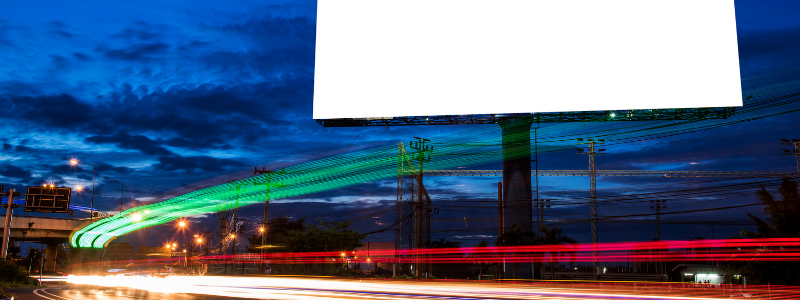
OOH Advertising Trends
Today, virtually any outside space can be transformed into some sort of OOH advertisement.
There are new forms of media emerging all around us, such as car wraps, murals, art installations, and digital signage. Out-of-home advertising no longer ends with static billboards and transit posters. Thanks to the digital shift, it has become incredibly innovative. Digital billboards, street furniture, light shows, and transit signage are now lighting up metropolitan areas all around the world.
Digital signage offers more flexibility than traditional static billboards. It can display moving images and interactive content, which is great for catching the attention of passerby-ers and making a greater impact. Additionally, digital signage allows for multiple ads to be displayed on the same medium, with some ads programmed to change at specific time intervals. This variety keeps viewers engaged and receptive to your ad’s message.
Geotargeting and Mobile Integration
Mobile integration paired with an out-of-home advertisement is known to bring impressive results for any business strategy. Billboards are now using geotargeting technologies that allow companies to generate data that points them to the right demographic, the right location, and the right times to display their advertisement. By targeting the right audience, there is a better chance of a conversion.
Geotargeting delivers content and advertisements to consumers based on their geographic locations. This could include geographical proximity to a mobile billboard or proximity to a store, and etc.
Analytics and data surrounding your marketing campaign ensure adequate media planning. Another benefit to geo-targeted ads is that it allows companies to track and monitor their campaign’s performance.
Interactive Brand Communication
Interactive advertising can be experienced through store displays, kiosks, and digital signage everywhere. It encourages consumer participation, allowing them to provide feedback and become part of your ad’s dialogue.
Because these types of out-of-home advertisements are incredibly innovative, consumers are excited to engage with the ad, increasing their conversion and ROIs. These types of advertisements are eye-catching and can become an experience in itself for the consumer.
Through the use of hashtags and interactive games, the consumer becomes involved in the ad, making the branding process more compelling and effective.
Brand Storytelling
Storytelling is a way for brands to create a human connection with their audience. An advertising campaign with a capturing narrative can impact the subconscious, ultimately creating a relationship between the brand and consumer. A consumer-brand relationship is important because you want to have dedicated consumers who’ll remain loyal to your product or service.
When storytelling with OOH ads, brands can design billboards or digital displays that tell only a part of the story, leaving consumers wanting and waiting around for the next saga of your campaign. This creates excitement and hype around your campaign, which later translates into increased ROI and brand awareness.
Increased Budget and Investment for OOH Advertising
The arrival of smartphones saw companies turn more to mobile and web advertising, thinking out-of-home advertising was a thing of the past when in fact, OOH advertising has seen steady growth since 2012.
Many companies are catching on to the reliability and growth that OOH ads can bring and are increasing their budgets for this form of advertising. Out-of-home advertising represents a large portion of advertising spending. In 2017, OOH advertisements represented $29 billion across key markets globally — some of the companies spending the most on OOH advertisements include Apple, Google, and Amazon.
Additionally, major companies such as Netflix and Alibaba are investing big in outdoor ad companies as out-of-home advertising formats are becoming increasingly valuable forms of commercial real estate.
SMART Advertising
Consumers are becoming more and more tech-savvy every day, resulting in more of us relying on our smart devices more and more. There are smartphones, smart TVs, smartwatches, and beyond. It’s no question that almost every technological device is transitioning to SMART technology, and it’s the same for billboards and other outdoor signage.
We are now seeing the integration of billboards and SMART technology, known as SMART billboards, which can further increase the visibility of your brand.
Some features of SMART billboards are:
- Built-in cameras and computer databases.
- Analytical tools that can pull information from databases and social media to change visuals on the billboard in real-time.
- Using social media apps like Instagram, Facebook, and Twitter to provide relevant content that engages the consumer.
- Providing live updates on weather and traffic.
- Built-in sensors to trigger ads.
- Personalized content based on consumers’ reactions and activities.
- High-tech LED lights and sound systems.
The steady growth of out-of-home advertising is driven by its adaptability to change and global digitalization. This dynamic advertising strategy demonstrates that “traditional” advertising methods are still relevant in today’s market. If you want to maximize your marketing strategy, it’s wise to include billboards and other forms of out-of-home advertising.
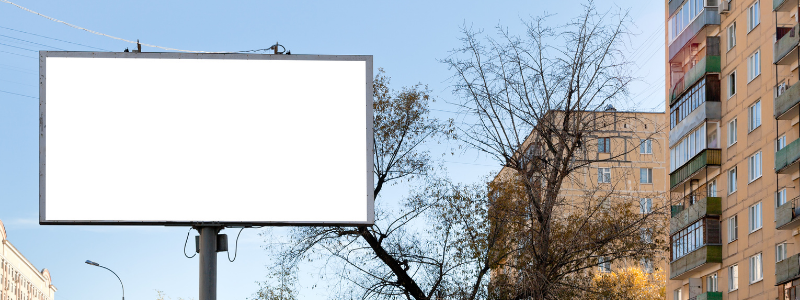
OOH Advertising Examples
A key innovation in the OOH advertising space has been digital OOH advertising. While there are many digital billboards that could be considered effective OOH advertising examples, the best comes out of New York City. Times Square is saturated with digital billboards that play video advertisements nonstop. Digital OOH ads manage to combine the bright colors, movement, and sound of ads like TV commercials with the size and unblockability of traditional OOH ads. The result of this is a new, hybrid advertisement that blends the benefits of multiple forms of advertising.
Billboards
Billboards are one of the most common forms of OOH ads. Because of how many billboards there are worldwide, it can be difficult to make a billboard ad that stands out. You aren’t sure if drivers passing by will notice it. To solve this, effective billboard advertising should be creative and memorable.
One company that’s done a great job with its billboard advertising is Apple. In 2015, Apple launched its “Shot on iPhone” campaign. The campaign offered iPhone users the opportunity to capture images on their phones that would then be used on billboards, commercials, and other ads. Apple’s Shot on iPhone campaign displays the importance of engaging consumers and being thoughtful with image selection.
Another fantastic billboard example was a Formula toothpaste billboard in Indonesia. This remarkably creative advertisement shows a man whose teeth are so strong that he is literally ripping the billboard off of its supporting structure. This billboard is a wonderful example of using creativity to stand out.
Posters
Posters are another extremely common form of OOH advertisements. Because of their small size and widespread use, it’s extremely important to design a poster that will immediately stand out. Eye-popping colors and creative images will help ensure that your ad will be noticed.
Some tips for effective poster advertising include:
- Create the poster to cater to a specific audience
- Use your brand’s color scheme
- Include a call to action
- Pick high-quality images
- Use text sparingly; include only the information that consumers really need
Airports
Airport advertisements are a subset of place-based advertising. Many companies consider airports a gold mine for ads. They are a fantastic place to either stick with traditional billboards or posters. You can also utilize other aspects of airports, such as conveyor belts, to create incredibly unique advertisements.
One example of creative airport advertising is at the Venice Marco Polo Airport. The Casino de Venezia decided to turn a baggage collection belt into a life-sized roulette wheel. This fun, unique advertisement did a fantastic job at keeping people engaged during an otherwise mundane activity of waiting for your luggage. In addition, the Casino reported that visits increased by 60% after installing this advertisement.
Another interactive airport advertisement was installed in the Tokyo Airport in anticipation of the 2020 Summer Olympics. The Tokyo airport turned an entire airport terminal into a running track. This incredibly creative advertisement is a great example of utilizing the entire airport to promote an event.
Street Furniture
Street furniture advertising is most commonly seen at bus stops or on benches. Advertising on street furniture can be a great way to engage those walking by. Nike is well-known for its creative and thought-provoking advertisements, and its ads on street furniture are no exception. In one example, Nike placed its iconic swoosh logo along with the word “RUN” on a bench in Madison Square Park in New York. They then removed the seat of the bench. This simple yet eye-catching ad, combined with the action of removing the seat, is memorable and perfectly aligned with Nike’s message that everyone is an athlete.
Transportation
Advertising on public transportation, such as buses or subways, is also extremely common. Many people on public transportation tend to be bored. They are looking for some form of entertainment while they travel.
Startup mattress company Casper realized this, and developed a riddle campaign in the NYC subway system that simultaneously entertained riders while advertising their product.
The riddles they put up engaged subway riders, which helped ensure that their advertisement and company would be remembered.
These are just some of the most effective OOH advertising examples, but there are plenty more!
OOH Advertising with bMedia
Looking to increase your company’s profits? Consider investing in OOH advertising. With a creative and memorable campaign, you can attract more customers and increase your bottom line. And if you’re advertising in Puerto Rico, there’s no better partner than bMedia, the island’s top OOH media and advertising company.
We’re passionate about helping your business succeed, and we’ll work closely with you to ensure your ads are effective and memorable. So why wait? Contact us today and let’s get started.

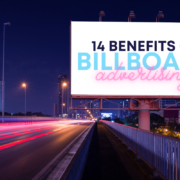





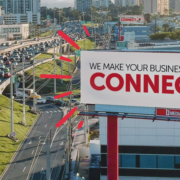
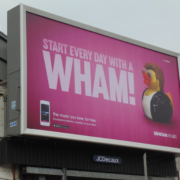

 787 792 4113
787 792 4113
